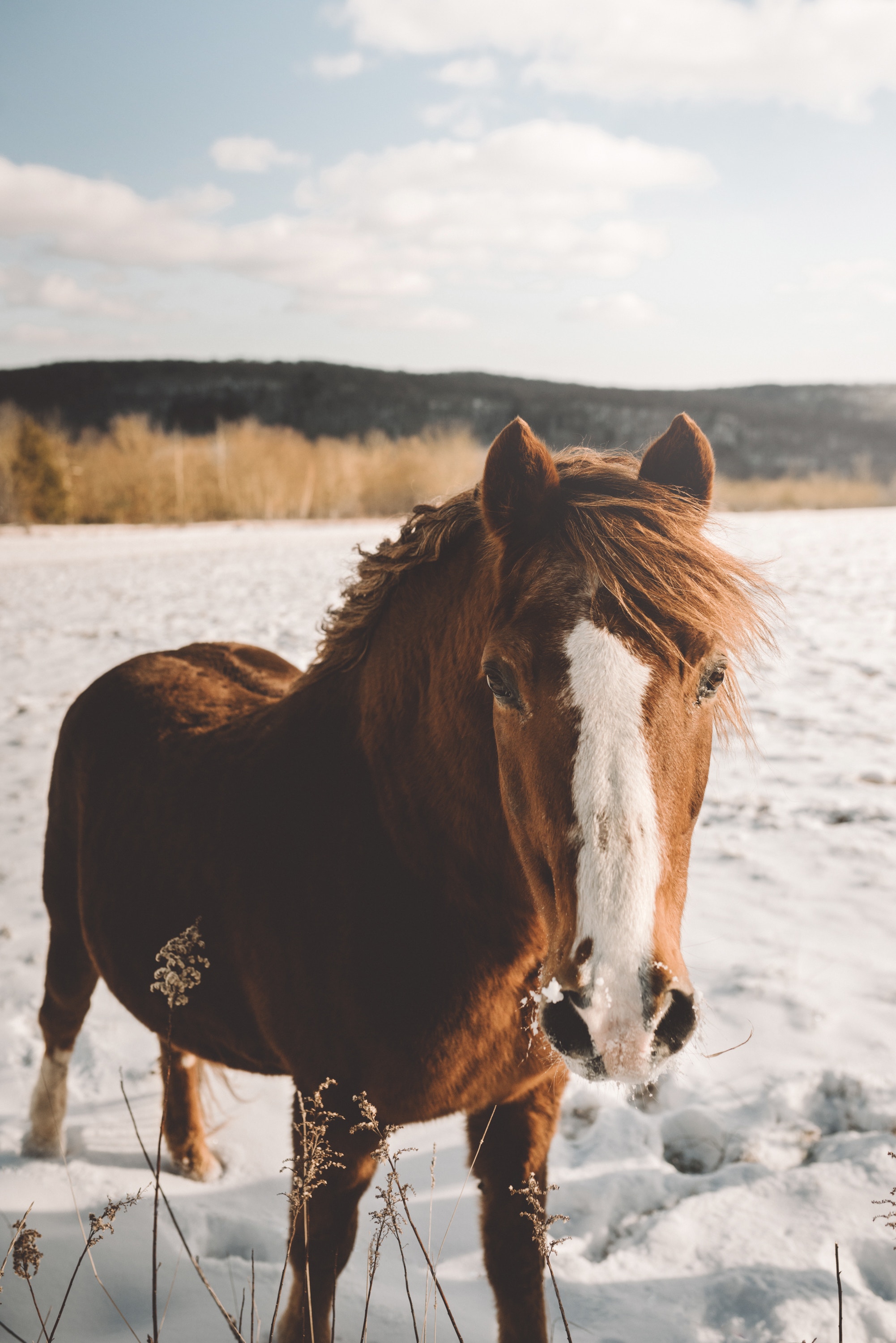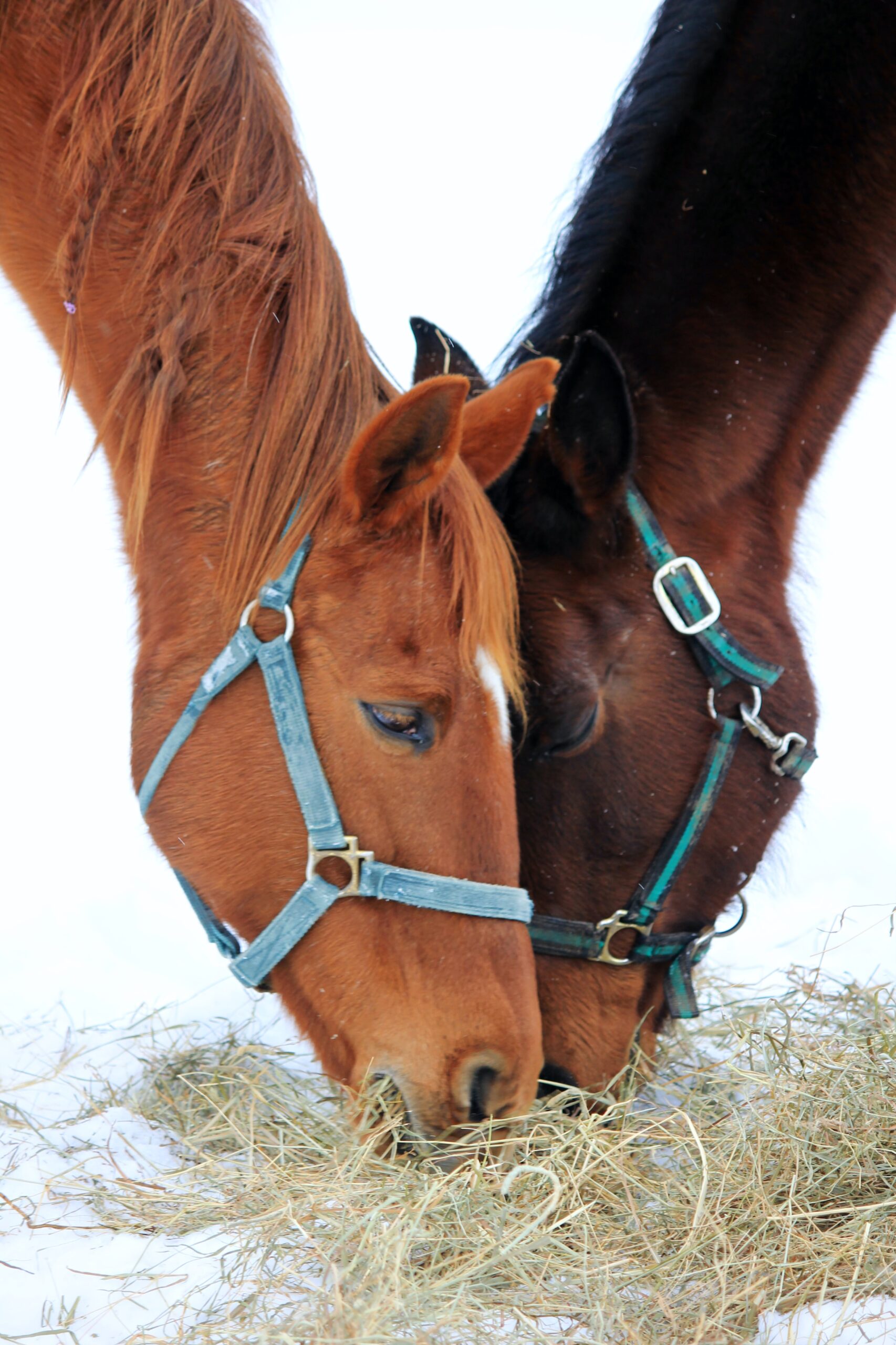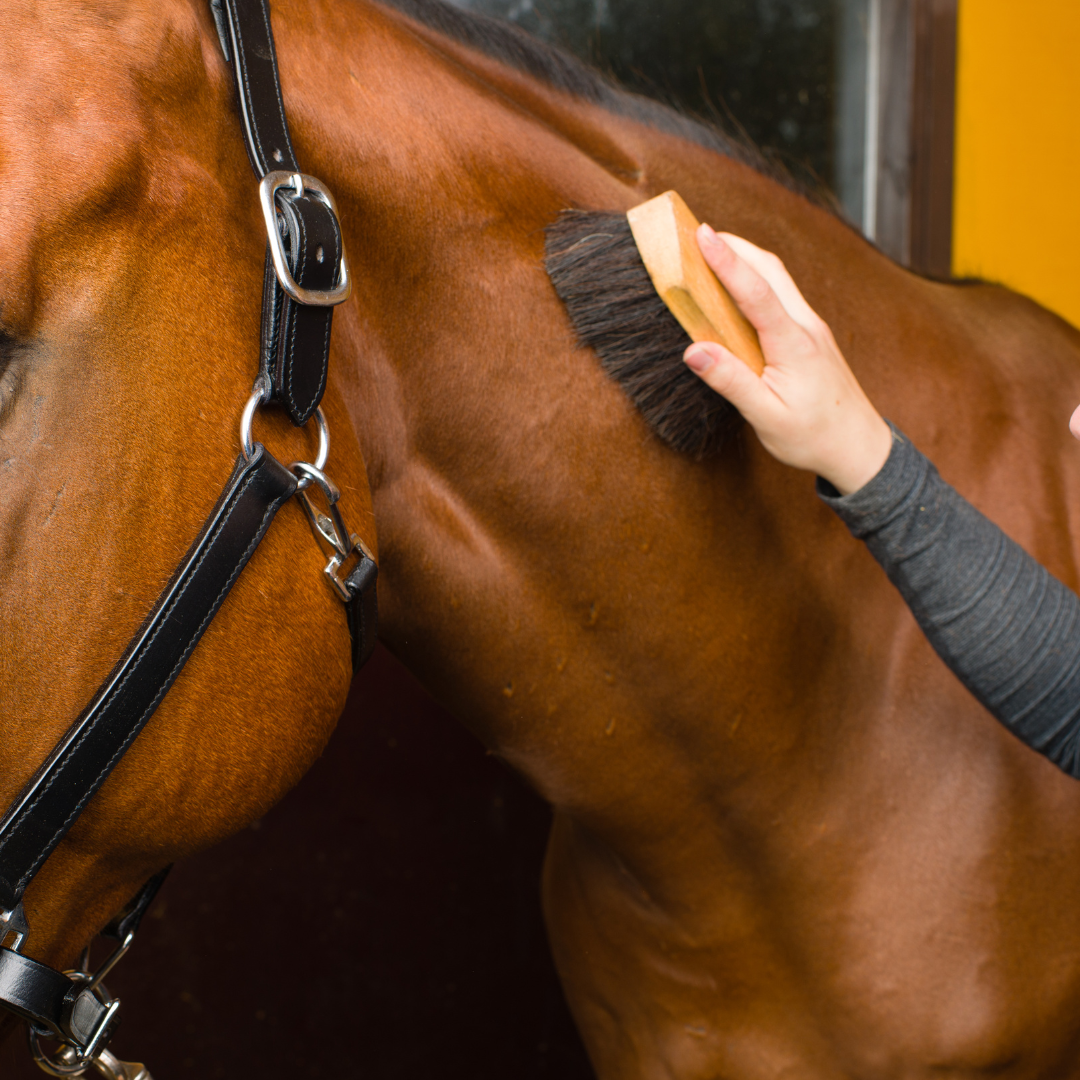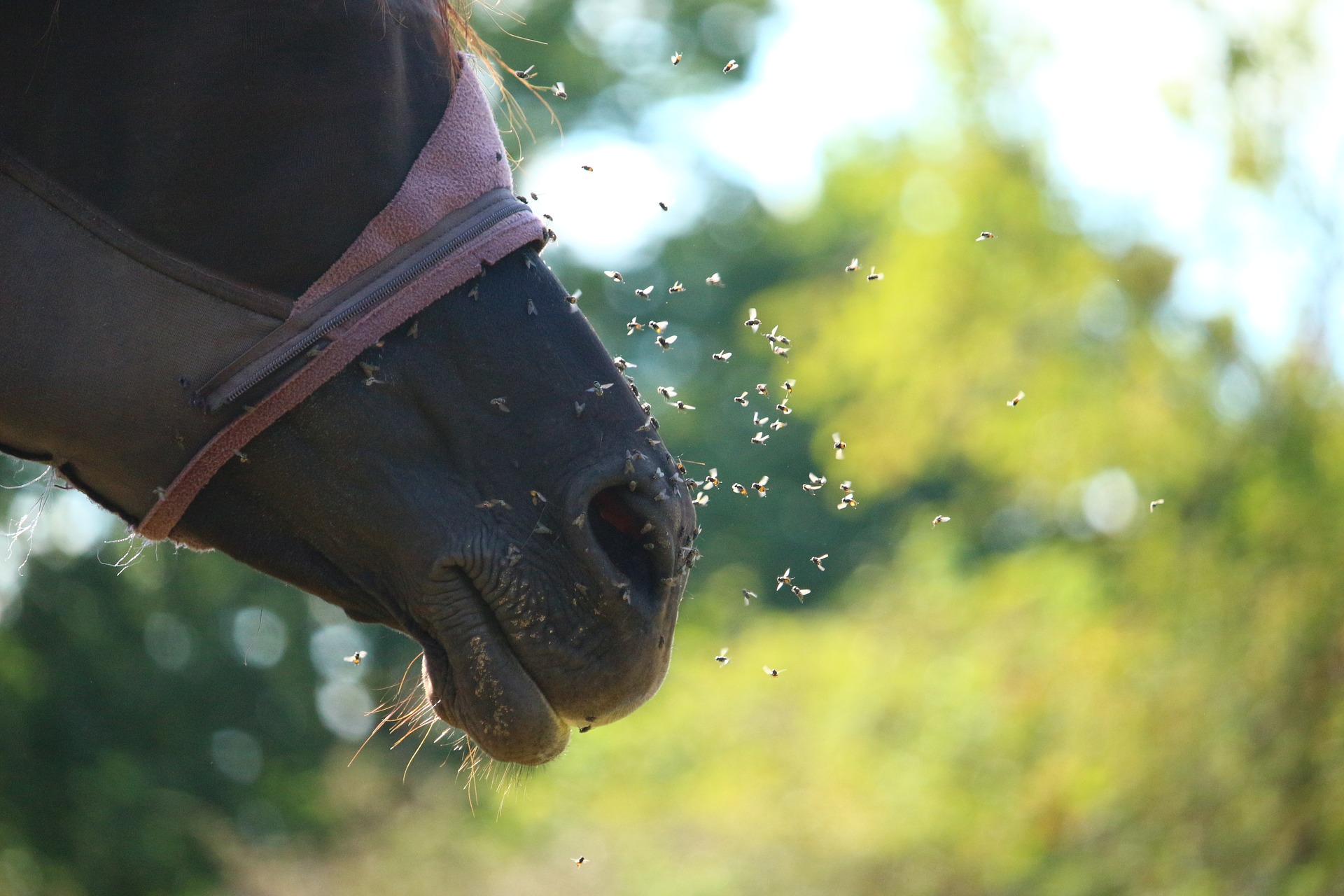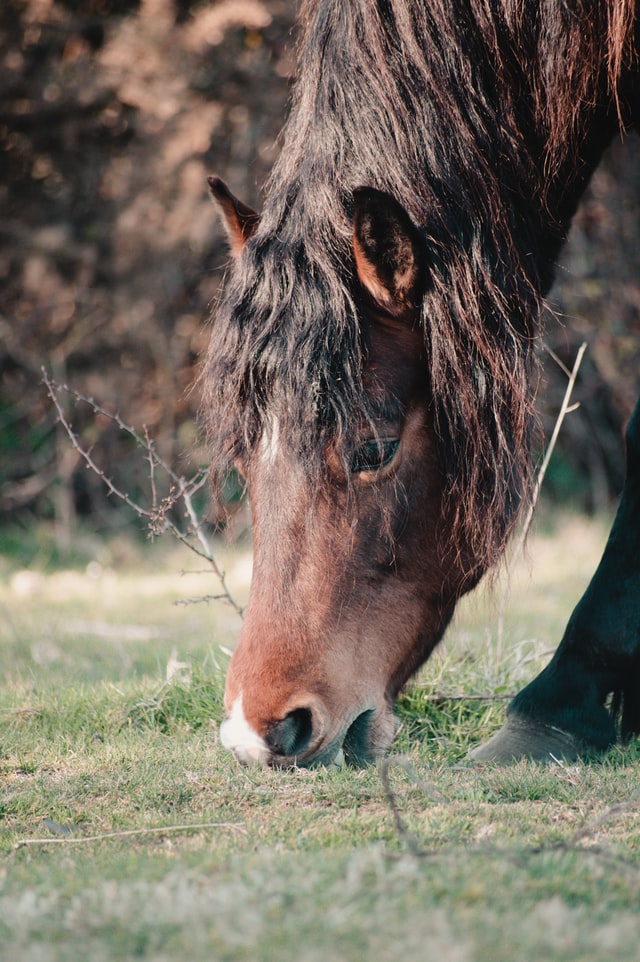20 Must-Have Items in Your Horse First Aid Kit
Build am equine first aid kit for both the barn and the trailer, so you’ll always have what you need – when you need it.
If you’re a new horse owner, an equine first aid-kit is a necessity. It is something you should compile as soon as possible.
Also, if you’re a new horse owner, check out my other posts specifically for you!
- Top 10 Toxic Plants For Horses
- 11 Essentials For Your Horse Grooming Kit
- 7 Turnout Blankets for Less Than $300
The old adage, “better to have it and not need it, than need it and not have it” applies here.
The list below that we’ve compiled was made with an equine emergency in mind, but many of these can be used for horse owners and other livestock as well.
If you trail ride, a smaller version of this can be packed in a saddle bag for emergencies.
If you are going on an extended trail ride I would consider bringing an extra battery for your phone or a way to remotely charge it and give someone else you’re riding with a phone number for an emergency contact.
I have two equally stocked kits – one in my tack room and one for my trailer.
I’ll go through both and check all of the first-aid items on a regular basis for expiration dates.
Things like vet wrap and Elastikon don’t have expiration dates, but the adhesive can melt in hot temperatures making them very difficult to use.
Additionally, in your tack room near where you keep the first aid equipment you should list out the emergency numbers for your vet and farrier in case someone else needs to make a phone call for you.
For more ideas and how to create a emergency first aid kit for your other animals check out the American Veterinary Medicine Association’s first aid checklist.
20 Must-Have Items in Your Equine First Aid Kit
1. Bandages For Your Equine First Aid Kit
The first thing you’re going to need is Elastikon, vet wrap, leg wraps, shipping wraps, even a polo wrap for bandaging large wounds.
You’ll want to have something flexible available in case you need to wrap an open wound or poultice.
For hooves you’ll want a hoof boot which will allow you to to keep your horse comfortable should he throw a shoe, or make a convenient way to attach a bandage should he step on a nail or get some other type of wound.
2. Scissors
Scissors are vitally important for cutting duct tape, elastikon, or electrical tape.
Should you find yourself needing to put a wrap on your horse in a hurry, having scissors to be able to cut the elastikon or duct-tape will make things easier.
I once found a horse who had managed to wrap her tail around the handle of a bucket hanging in her stall and walk halfway out of the stall before she got stuck.
She was stuck in such a way that she couldn’t back up, and couldn’t walk forward.
A pair of handy scissors helped me cut her loose before she panicked.
3. Buckets
Everything from dousing a hot horse with water or letting them drink a bit of water, to soaking hooves or even used as a first aid kit container, buckets are essential.
4. Flashlight
Horses always seem to injure themselves at the worst time, and night is no exception.
Keep a flashlight with charged batteries available for inspecting wounds in the dark.
Or even better, one of those wind-up powered ones so you don’t have to worry about running out of batteries.
These PrimalCamp LED ones are solar powdered and crank powered.
5. Tweezers
Tweezers can be used to pick off ticks, remove shards of wood, or just get into tight places your fingers can’t fit.
While you’ll likely already have a hoof pick in your grooming kit, you may consider adding one to your first aid kit as well.
They are inexpensive and you can keep this one sterile.
6. Ice Pack
Ice packs are essential to help to cool down a hot horse or apply immediate cold to swollen limbs.
These ice wraps are incredibly handy if your horse has a bowed tendon or any inflammation along the cannon bones.
7. Lubricant
Keep a jar of vaseline in your first aid kit for assisting thermometers getting to where they need to go or use it for sunscreen on horses with white noses or on burns/fresh skin to protect and encourage hair to grow back.
8. Rubbing Alcohol
For disinfecting scissors, tweezers, or thermometers. Do not use to disinfect wounds as it can dry out the skin you want to heal.
9. Sheet or Roll Cotton
On scrapes and cuts on the leg, you’ll disinfect it, cover it with non-stick gauze, and then wrap what you can with a roll of sheet cotton or cotton wool.
This provides some cushioning, protects the area from getting dirty, and holds the gauze in place.
10. Betadine
Betadine is a beautifully gentle disinfectant and wound cleaner.
If your horse gets a small cut or small wound, you can disinfect it with betadine before drying it and wrapping it.
Always disinfect more than you think you need to.
For a serious wound, call your vet and follow their instructions.
Depending on the wound they may recommend you not do anything to it, including disinfect it, until they can get there.
11. Sterile Gauze
Sterile, non-stick gauze will hold any antibiotic ointment, or simply to cover an open wound and protect it from getting dirty.
I prefer using the non-stick version so I don’t tear off new skin when I replace the bandage.
12. Surgical Gloves
It’s always a good idea to wear latex gloves or surgical gloves when dealing with blood or treating a wound to prevent infection.
13. Thermometer
A rectal digital thermometer is essential for taking a horse’s temperature.
Specific horse thermometers can be bought and have a string attached to the end already so you don’t lose the thermometer in the horse’s rectum.
14. Wire Cutters
Wire cutters can be handy if your horse gets caught up in wire fencing, or even hooks and bucket handles.
15. Bottled Sterile Water
Bottled sterile water or a saline solution is good to have on hand for flushing debris out of eyes, or open wounds.
16. Bute
A non-steroidal anti-inflammatory, Phenylbutazone can be used like aspirin.
It can be bought in an oral paste, or an injectionable solution. Use it to provide pain relief, and reduce fevers.
17. TWITCH
Usually a twitch is a long wooden pole with a loop of rope at the end.
This loop is slipped over the horse’s nose as the pole is twisted until the rope tightens down around the soft upper lip.
While this may seem cruel, it is certainly effective for situations in which you need to immobilize the horse for it’s own and your safety.
18. POULTICE
A poultice is a thick solution that is applied to swelling in an attempt to draw out the inflammation.
Along the same lines of soaking a limb to bring down inflammation, I would recommend having Epsom salts for soaking hooves.
I like this DermaGen Wound, Cut and Burn Topical Ointment for just about everything.
I keep one handy and use it, with vet approval.
19. ACE
Acepromazine is a strong tranquilizer and should only be used at the discretion or at the direction of a vet.
20. FLUNIXIN
Another non-steriodal anti-inflammatory, flunixin is more agressive at targeting inflamed tissue and is usually used in the treatment of colic pain, join disease and to alleviate fevers.
A side effect of administering flunixin is usually diarrhea, which also helps in cases of a suspected GI blockage.
A good place to buy all of the more medical supplies, as well as the drugs, you can buy from your vet.
If you’re buying your first horse, you may consider buying these things from your vet after the horse passes the pre-purchase exam.
For more on what a pre-purchase exam is, and why you need one check out my post.
Did I miss anything? What do you have in your first aid kit?
